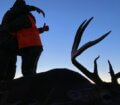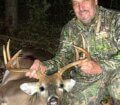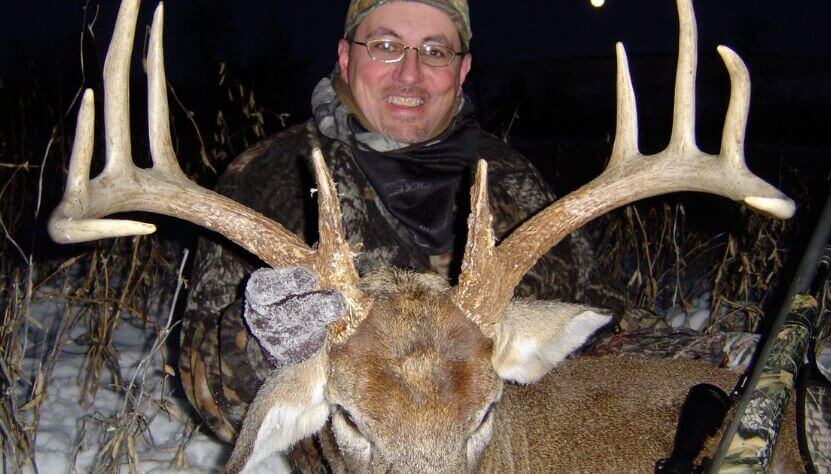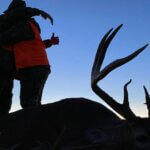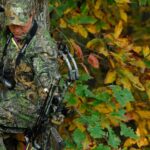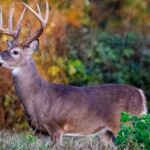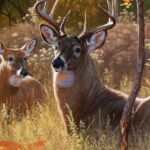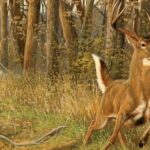Editor’s Note: I’ve known and hunted with Mark Drury of Missouri, co-owner of Drury Outdoors, for over 30 years. I’ve been fortunate enough to watch him not only as a videographer and a TV host but also as a land manager and hunter who’s learned the secrets of growing and taking big white-tailed bucks. Once you learn the Drury system of managing satellite hunting properties and keeping a log of bucks from 2-1/2 years old and older you’re planning to take, you can also produce more and bigger bucks on the properties you hunt, just like Mark does. This week, you’ll learn the system the Drury family uses to consistently find and take older-age-class bucks with bigger racks and bodies than most have ever seen. For more information about Mark Drury, visit his Facebook page.
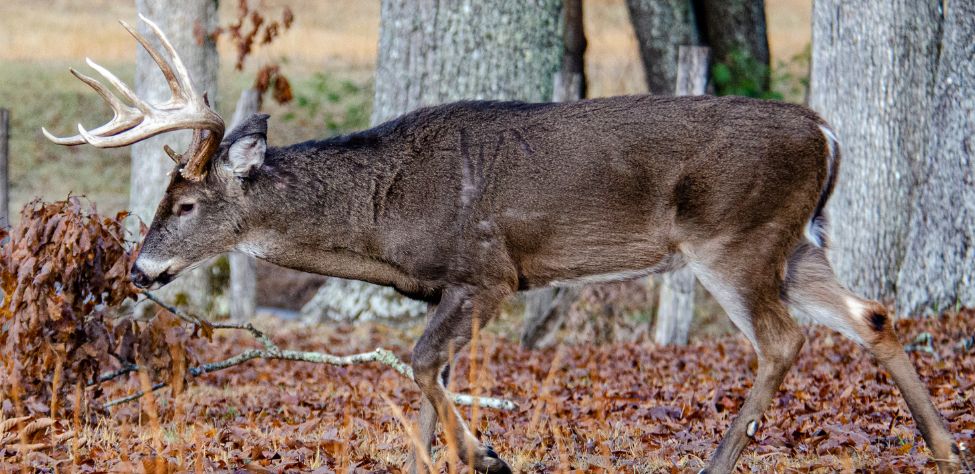
Four requirements are needed to have older-age bucks stay on and return to your property: food, cover, water, and a lack of intrusion. If you have plenty of food, an abundance of cover, and water and stay off that property until the day you’re planning to take a mature buck, you can hold and attract deer onto your land during deer season.
One of the biggest things that causes hunters to lose or not attract bucks to their hunting properties is intrusion. I believe that on my land, we don’t have many problems with poachers. I’ve put up plenty of trail cameras that aren’t easily visible on my property. The trail cameras not only catch photos of deer and other wildlife, but they can and will also catch poachers. I’m pretty sure that the last thing a poacher wants to happen is for a trail camera to take a picture of him that can be shown in court. Another way to prevent intrusion is only to hunt the property when you know you’ve got the right wind and weather conditions and stand to take the buck you intend to take.
I’m running about 140 trail cameras between my properties in Missouri, Iowa, and Texas, and every year, I probably look at about 2 million trail camera photos. I’m constantly studying photos from previous years as well as photos from the current year. That process just about drives me crazy, but to consistently take older-age-class bucks every year, you need that information to make the best hunting decisions.
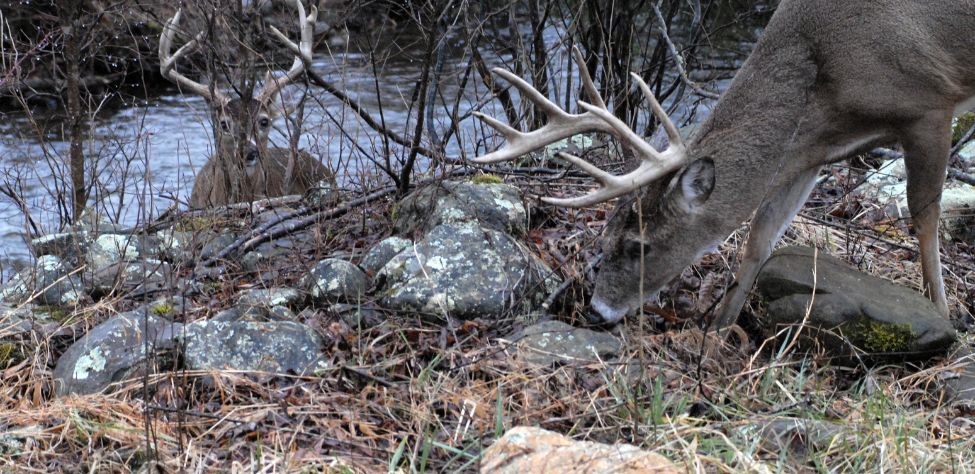
To keep up with checking the cameras and to go into our stands as silently as possible, we start trimming or mowing the trails we’ll take to move into our blinds or tree stands. We need good access to get into and out of our stands as quickly and silently as possible. The three reasons that I like to have clean trails going to my hunting sites are:
- get in silently;
- avoid noise going to my stand to be able to get to the stand quickly, and
- Avoid ticks, especially in the early season.
I also spray Permethrin on these trails, which I believe to be the best anti-tick insecticide on the market. And yes, the deer can smell it. You must go in with a favorable wind; use Nose Jammer odor killer and Scent-A-Way odor control.
Another question I’m often asked is, “What bow, arrow, and broadhead are you shooting when you’re bowhunting?” I’m very impressed with the Mathews line of bows, so it’s not shocking that I shoot a Mathews VXR. This bow is still in your hand, quiet, lightweight, and highly well-engineered. Many people may be surprised, but I’m only shooting 53 pounds because I have a bad left shoulder. I know many bowhunters like to shoot 60–70 pounds or as heavy a draw length as they can pull. But, I currently have a white-tailed buck in my living room that grossed 211 inches, and I shot that buck by only drawing 47 pounds. I shot him at 25 yards, and my arrow passed through both lungs. This deer shows how today’s bows are so efficient that you don’t have to shoot a heavy draw weight to take a buck. One of the arrows that I like to use is the Victory Arrow, a micro-diameter arrow with a Rage broadhead that cuts 2 inches on contact. This arrow causes great blood trails, making recovering my deer much more accessible.
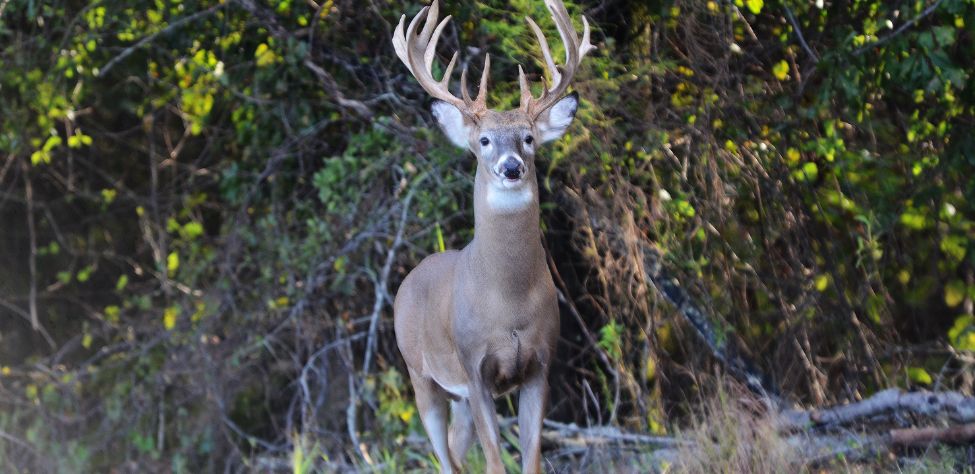
I always have two or three bucks I’m planning to hunt myself going into each season. Still, we probably have trail-camera pictures of about 30 mature bucks in Missouri and an additional 30 bucks in Iowa. However, having said that, we’ll narrow those numbers down to the mature bucks that we can see walking during daylight hours.
With as many trail cameras as I have, not only in Missouri but also in Iowa and Texas, one of the questions I’m often asked is, “You must be burning a set of tires off your truck every year traveling and checking all of those trail cameras.” But I don’t. The cameras are set up so I can go to them, change cards, and leave without spooking or affecting the deer in that area. I check many of those cameras personally, but the ones that are too far away from me can be checked from my phone.
Besides the several bucks that Terry, my brother, and I pick out to hunt and take, we’ll usually harvest 25–35 deer a season between the properties in Texas, Missouri, and Iowa. Family, friends, and guests will come in and hunt with us. By using the system we’ve set up – providing plenty of food, water, and cover for the deer and staying out of those properties until we’re ready to take the deer we’ve found, we’re not overhunting any one property.

How to Hunt and Take Big Buck Deer on Small Properties
In this book, you’ll hear from 14 hunters who either have gained permission or leased properties as small as six acres to as much as 250 acres, and how they consistently take older-age-class bucks off these little lands.
VERSIONS: AUDIBLE, KINDLE & PRINT

Jim Crumley’s Secrets of Bowhunting Deer
Using a black magic marker and a gray work jumpsuit, Jim Crumley of Buchanan, Virginia, drastically changed the nature and purpose of hunting camouflage when he created the first sportsman’s camouflage – Trebark. Crumley’s love of bowhunting and his desire to be more invisible changed hunting clothing forever.
In this hunting guide, he shares the wisdom that he’s learned throughout his lifetime about how to be a hunter, how to find a deer lease, how to scout for deer, and more.
Special features include how to:
- Have a magic 60 acres to hunt
- Decide the best equipment to use
- Find deer year-round
- Locate land to hunt
- Know the best place to put your tree stand
- Get bucks within bow range
VERSIONS: AUDIBLE, KINDLE & PRINT

How to Hunt Deer Like a Pro
How do you know if the land you hunt has a trophy deer on it? Wildlife manager Bob Zaiglin, of Uvalde, Texas and Jim Crumley, the father of modern-day hunting camouflage, tells you how to find out. GPS can make finding and taking that trophy buck easier. This hunting guide will teach you how to hunt big bucks where no one else can find them, how to call deer, and how to become versatile as a deer hunter, so that if one deer tactic doesn’t work, another one will.
In the chapter, “How to find Bucks at Scrape,” Dr. Keith Causey, retired professor of Wildlife Science at Auburn University, describes the best way to hunt a scrape.
Brad Harrison of Neosho, Missouri, is a nationally-known videographer, professional deer hunter and master at calling deer. Another master is Will Primos of Primos Game Calls. These two experts will tell the best deer calls and when to use them in this book.
And for over 20 years, Bo Pitman, lodge manager of White Oak Plantation, has been studying deer movement patterns. He explains what types of conditions are best for predicting deer movement.
VERSIONS: AUDIBLE, KINDLE & PRINT

Deer hunting and deer hunters are drastically changing each year. To learn new techniques for hunting deer and have more places to hunt, I’ve interviewed some of the best deer hunters in the nation and share their tactics in How to Hunt Deer Like a Pro: Volume II.
In Chapter 10, Jacob Lamar tells you his tactics for consistently taking older-age-class bucks on public lands in several states. Chapter 11, Bob Walker explains how to find places on public lands where you can hunt that 99 percent of the other hunters never have considered hunting. The Bonus Chapter with David Ramey tells you how, where, when and with what equipment to take big Kansas bucks on public lands by hunting in 100-degree weather when others won’t hunt.
Chapter 13, Mark Drury, his family and his guests take mature bucks every season by having more small places to hunt rather than one large property. Drury explains the strategy of having satellite farms to hunt that only may be 50-150 acres each or less. Chapter 15, Pat Reeve, who hunts far-northern states and Canada, says, “I don’t like hunting for mature bucks until the weather is 20 degrees or less.” Chapter 4, Dr. Larry Marchinton says that funnels are the most-reliable stand sites to hunt for big bucks and tells why.
VERSIONS: AUDIBLE & PRINT

